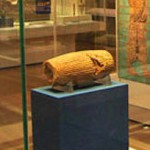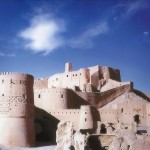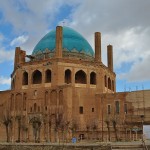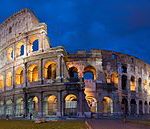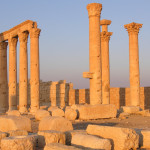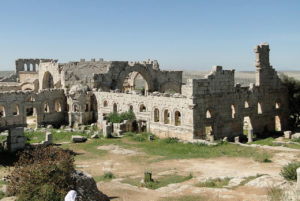 According to reports in several news outlets, the recent airstrikes have caused severe damage to the Church of Saint Simeon, part of the UNESCO World Heritage property of the Ancient Villages of Northern Syria. The photographs of the area show that the byzantine Church which is believed to have been built in the year 490 AD on Mount Simeon and used to be a popular destination for worshipers and tourists alike before the civil war has been mostly destroyed.
According to reports in several news outlets, the recent airstrikes have caused severe damage to the Church of Saint Simeon, part of the UNESCO World Heritage property of the Ancient Villages of Northern Syria. The photographs of the area show that the byzantine Church which is believed to have been built in the year 490 AD on Mount Simeon and used to be a popular destination for worshipers and tourists alike before the civil war has been mostly destroyed.
UNESCO reports that the Director-General of UNESCO, Ms Irina Bokova, has now issued a statement and has deplored the heavy damage incurred to the historic and heritage site in Northern Syria. It is believed that the destruction is possibly a result of an air strike on May 12th, 2016.
UNESCO statement reads: “I again reiterate my call on all parties to the conflict to refrain from any military use and from targeting cultural heritage sites and monuments across all of Syria, in respect of their obligations under international treaties, particularly the 1954 UNESCO Convention on the Protection of Cultural Property in the Event of Armed Conflict and its two Protocols, as well as the 1972 World Heritage Convention.”
It has also been reported that UNESCO has received information and photographic evidence showing that the Church appears to have suffered extensive damage, including to the remains of the pillars on which Saint Simeon is said to have spent forty years as a hermit.
According to the UNESCO’s site, the Church of Saint Simeon Stylites is part of the UNESCO World Heritage site of the Ancient Villages of Northern Syria, some 40 villages grouped in eight parks situated in north-western Syria that provide remarkable testimony to rural life in late Antiquity and during the Byzantine period. These villages are believed to have been abandoned in the 8th to 10th centuries, but they date back from the 1st to 7th centuries, and feature a remarkably well preserved landscape and the architectural remains of dwellings, pagan temples, churches, cisterns, bathhouses etc. The relict cultural landscape of the villages also constitutes an important illustration of the transition from the ancient pagan world of the Roman Empire to Byzantine Christianity. The archaeologists have also observed vestiges illustrating hydraulic techniques, protective walls and Roman agricultural plot plans which furthermore offer testimony to the inhabitants’ mastery of agricultural production.




